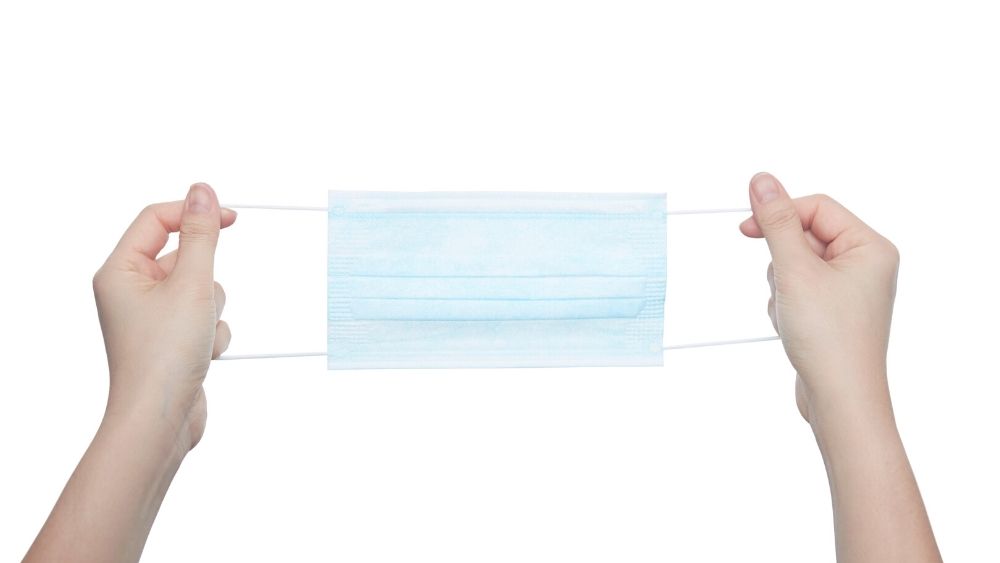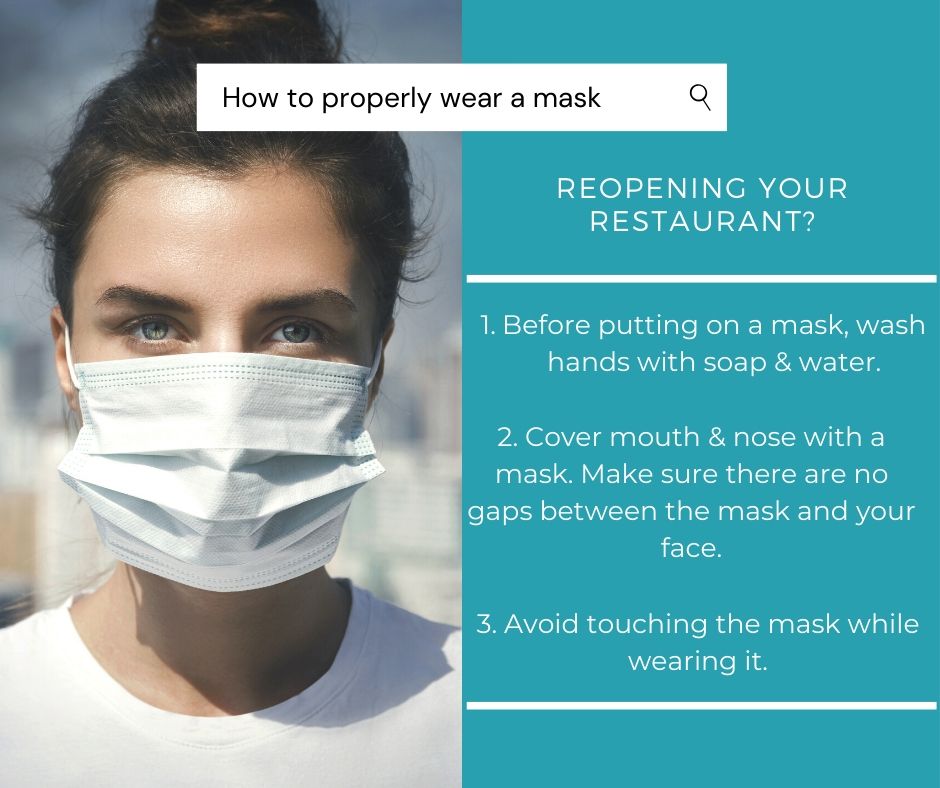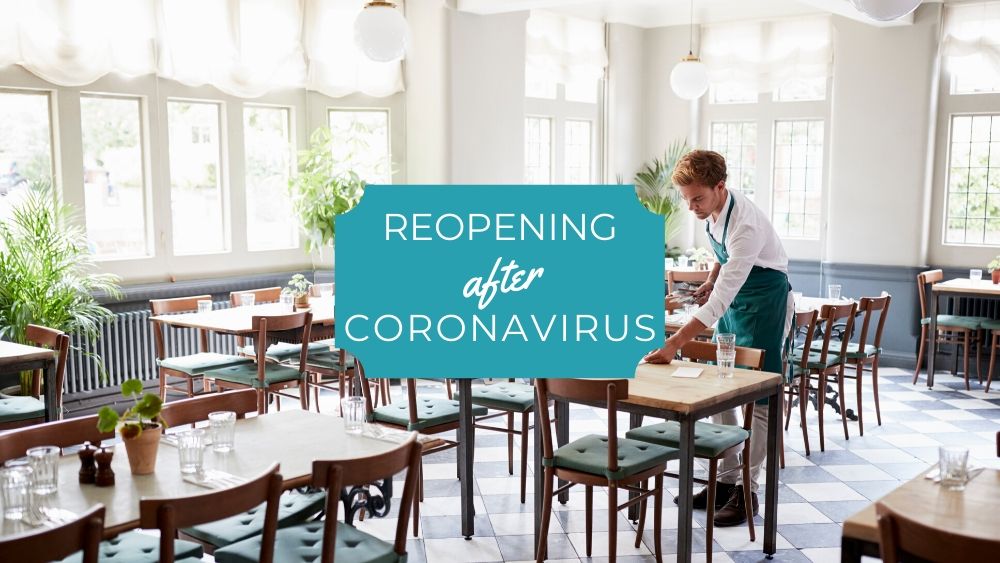Coronavirus, also known as COVID-19, has been spreading quickly around the world. Restaurants and foodservice businesses were closed down for months. However, places in the world are starting to reopen, but what does this mean for restaurants and food retailers? COVID-19 restaurant reopening best practices includes cleaning and sanitizing protocols, wearing a mask, social distancing, and employee training.
Covid-19 Restaurant reopening strategy:
Most importantly, businesses have to plan a reopening strategy that is safe and efficient for staff and customers. COVID-19 brings a new risk that is not controllable. As things start to open up (depending on local health guidelines), restaurants and food retailers have to take precautions and comply with food safety. This article will include the importance of best practices for restaurant owners or employees, cleaning and sanitation importance, and employee training.
Employers must understand the risk of COVID-19 before opening back up:
- COVID-19 is a virus that spreads from person to person.
- Spreads through droplets or discharge from the nose when one coughs, sneezes, or talks.
- It has a wide range of symptoms that vary from person to person- these symptoms range from mild to severe.
- Low risk of spreading the virus through food- not food borne.
Employers are required to develop a COVID-19 safety plan. This plan includes assessing the risk of Coronavirus spreading and implementing rules to reduce the spread and risk. In addition, management needs to develop protocols and best actions for food preparation, cleaning the facility and equipment, and staff training to prevent the transmission of COVID-19.
Worksafe BC Protocol Guideline:
Worksafe BC created an industry-specific protocol guideline for a COVID-19 safety plan for restaurant reopening. These guidelines include 4 parts: elimination, engineering controls, administrative controls, and PPE.
- Elimination is limiting the number of people in the workspace. This includes the social distancing guideline of 6 feet, which means restaurants need to reduce their occupancy.
- Engineering control means if social distancing rules of 6 ft are unable to occur, install barriers and protective equipment. Barriers include plexiglass barriers, which could be seen at grocery stores.
- Administration controls mean creating protocols in the workplace.
- PPE is personal protective equipment. This includes masks and gloves (Worksafe BC).

Restaurants and other food service establishments must follow different rules as well, which are not included above.
These rules include:
- determining the maximum number of people that can be in the building 6ft apart & make sure this maximum number of people does not get exceeded
- having separate areas for dine-in and take out
- no more than 6 people seated at a table
COVID-19 brings not only a new business plan; it brings a unique dining experience to restaurants. Furthermore, tables must be 6-ft apart, staff must wear masks, and hand sanitizer located at every table. Businesses want customers to stay happy and have an enjoyable dining experience. However, if a restaurant does not comply with the local health guidelines, customers could have a bad experience. They may not feel safe or comfortable.
Furthermore, the restaurant experience is not a risk-free activity. There are best practices restaurant management can put in order to protect customers and employees. In addition, there is a more significant responsibility to keep everyone safe. Make sure your best practices follow local health guidelines.
COVID-19 Restaurant Reopening Best Practices
- Properly wearing a mask- all staff
- 6 ft social distance rule
- Limit number of staff- if possible
- Rearrange waiting & seating areas
- Hand sanitizer locations
- Employee training on COVID-19 proper preparation
- Cleaning & sanitation (more info on this below)
- Control all employees, visitors, delivery people’s body temperature to identify non-symptomatic persons to prevent contamination.
COVID-19 restaurant reopening best practices are decided and discussed among each restaurant management personnel. Above all, properly wearing a mask is the most essential way to prevent the transmission of the virus. Training your employees to wear the mask correctly will help reduce any stress or anxiety the employee has and make the customer feel more comfortable and safe. For instance, last week I went to buy an ice cream and the employee that was filling my ice cream cone was not wearing a mask. The cone was less than a foot from her mouth, I ended up leaving upset and without my cone. The employee not wearing a mask was concerning to me. I had a bad experience witnessing this. I felt uncomfortable and it was not safe behavior.
Furthermore, properly wearing a mask, and even putting up a sign on how to properly wear a mask will make the customers feel safer and have a better experience.

Cleaning facility/equipment to prevent the spread of COVID-19:
I mentioned above that COVID-19 brings a new dining experience. In addition, it brings the staff a new kitchen experience. Proper cleaning and sanitation are vital in preventing COVID-19 from spreading.
Restaurant reopening proper cleaning and sanitation protocol includes:
- Continuing to follow regulations of local health officials for your area.
- Hand washing procedure.
- Cleaning high touch equipment which includes (fridge doors, dishwasher doors, check out counters, etc.) & containers that are shared.
- Chefs & cooks should be using their own knives.
As a food service or restaurant having proper cleaning supplies is essential- soap, water, and disinfecting supplies. There should be no residue left on a surface after cleaning it. The CDC recommends creating a schedule for increased disinfecting and routine cleaning.
With that being said, some restaurants have been closed for months. This means all food needs to be checked for expiration dates, tampering, and damages.
Reorganizing the kitchen can help make less traffic occur. In other words, reorganizing it for the Chef or cook to be self-sufficient. This will reduce the spread because they will not be moving around the kitchen as much. Similarly, they are using their own knives or ingredients, so they do not have to share with someone else. Placing foot handles on the door can create a no-touch door.
A French designer Christophe Gernigon designed a “PLEX EAT protection bubble” to protect customers while they are eating at a restaurant. It is easy to disinfect and clean. In addition, it allows customers to feel safer and comfortable.

COVID-19 Restaurant Employee Training:
An essential task with restaurants dealing with COVID-19 is training their staff. This is new for everyone, and the team needs to take the correct actions to help reduce the spread of the virus. New training programs, online courses, and educating will help them do the correct thing. The staff will need to be educated on COVID-19 implications and safety protocols. In addition, they need to be educated on the basics of cleaning and sanitation, and all the best practices listed above. Trained employees will make the transition easier.
Restaurant Reopening COVID-19 Training Must Include:
- Hand hygiene
- Properly wearing a mask
- Cleaning, sanitizing, and disinfecting open surfaces
- Social distancing
- Remind employees not to come to work if sick
Education is key to reducing the spread of this virus. Training your staff and employees is one of the most critical steps to take for COVID-19 and the reopening of restaurants and other food services.
In conclusion, food safety does not just include worker safety and risk of food poisoning; it now includes reducing the risk of COVID-19. The importance of the best practices, cleaning and sanitation, and employee training listed in this article is to help reduce the risk and transmission of spreading the virus to your coworkers or customers. Stay kind and friendly to your restaurant staff and customers. These are hard times for people, and everyone is learning a new normal. COVID-19 is rapidly changing. Make sure to stay up to date on your local health guidelines for updated information.
How I can Help?
Get a Foodsafe and restaurant processes expert on board to implement COVID-19 restaurant reopening best practices plan for your food business. I can offer you leadership coaching with culinary insight and restaurant consultancy to help you reach your goal.
Book a free 30-minute consultation. To acquire new skills, visit our Online Culinary School and start making change.
